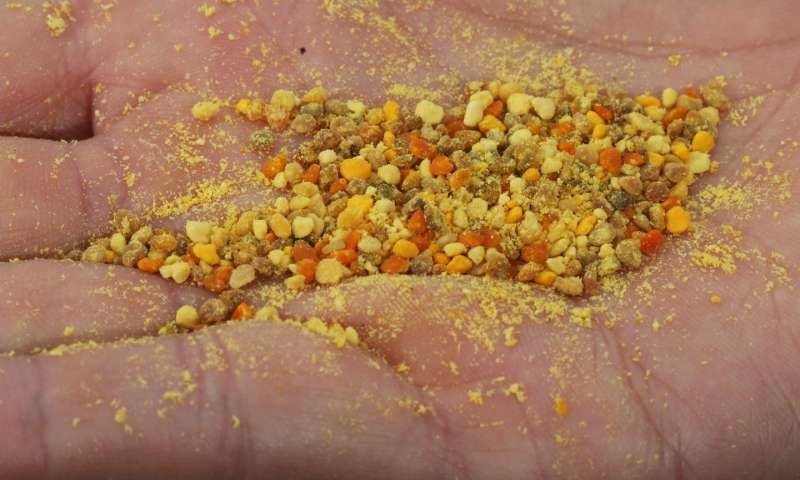
Bees that live next to cornfields and soybean fields spend only a minority of their time feeding on these crop plants; instead, they mostly seek out pollen from flowering weeds, trees and gardens nearby. In the course of their foraging, they are exposed to a surprisingly wide and concerning range of pesticides, new research shows.
In a study published May 30 in the journal Nature Communications, researchers Elizabeth Long and Christian Krupke show that bees next to cornfields collected pollen containing up to 32 different pesticides, most of which didn't originate from crops or agricultural applications. Pollen samples were taken over a four-month period from three hives in West Lafayette, Indiana, where Purdue University is located.
Some of these pesticides were expected. Neonicotinoids, for example, which some research has implicated in the decline of bees, are used to coat seeds and are known to be found in corn and soybean pollen. But others came as quite a surprise. The pesticides found in the greatest quantities were pyrethroids, synthetic products generally used in households to repel insects, says Krupke, an entomology professor at Purdue. Among these were phenothrin, which is used to repel ticks and fleas, and prallethrin, for killing wasps and hornets.
Pyrethroids are extremely toxic to bees. The researchers don't think the quantities found in pollen are high enough to immediately kill the insects, Krupke says, but they nevertheless have the potential to impact their health and may be playing a role in their decline. Populations of the insects have been falling in recent years; this past winter, over one-quarter of American honeybee colonies were wiped out.
The researchers also found the mosquito repellent DEET (also known as N,N-diethyl-meta-toluamide) in every single pollen sample.
Exactly how bees are exposed to these chemicals is unknown. Many of these pesticides are water soluble and are likely absorbed by plant roots through the soil. But others, such as DEET, are fat soluble and don't mix with water; how those ended up in pollen is as yet a mystery, Krupke says. Long, an assistant professor of entomology at Ohio State University, says these pesticides are on the market for general lawn and garden care and are probably sprayed onto plants by homeowners.
The results probably apply to large swathes of the country—anywhere crops like corn and soybeans are grown in abundance, Krupke says. He emphasizes the sheer number of pesticides to which honeybees are being exposed. "At no time did we find only one or two or three pesticides—we found multiple pesticides co-occurring in every single sample," he adds.
Scientists typically study the effect such chemicals have in isolation; how they impact bees in combination is unknown. "You can imagine that if you have many at a time, you could have enhanced toxicity," says Krupke.
Uncommon Knowledge
Newsweek is committed to challenging conventional wisdom and finding connections in the search for common ground.
Newsweek is committed to challenging conventional wisdom and finding connections in the search for common ground.
About the writer
Douglas Main is a journalist who lives in New York City and whose writing has appeared in the New York ... Read more
To read how Newsweek uses AI as a newsroom tool, Click here.








